"Tachanka" Russian infantry
In such conditions, the enemy seeks to avoid direct clashes with combat units and subunits, and is most active through systematic attacks on columns on communications, raids on rear facilities, command posts, etc.
The most dangerous are the actions of the enemy on communications, with the aim of disrupting the supply of the necessary material and technical means (ammunition, fuel, food, etc.) of units and subunits performing combat and special missions in remote areas or simply based there. Along with this, the adversary is trying to isolate, to the maximum extent possible, the areas of conducting combat and special operations from the inflow of reserves and psychologically exhaust the personnel of the troops.
Here you can cite an excerpt from the combat operations manual, compiled by the most dangerous field commander E. Khattab (destroyed as a result of a special operation in 2002) in 2001 g.:
In recent years, gangsters have been trying to install almost all land mines not in the roadway, but aside from it - in heaps of garbage, on trees, poles, etc., in order to inflict maximum losses on personnel on top of the combat vehicles. Most commonly used land mines, controlled by radio.
After the explosions of land mines, bandits, especially if the column is small, during the 5-15 mines produce intense shelling of machines of all kinds weapons. Subsequently, whenever possible, they seize weapons, documents, prisoners, and quickly disappear in dense thickets of mountain-wooded areas.
Thus, the experience of local wars and armed conflicts convincingly shows that ensuring the uninterrupted supply of material resources, i.e. free passage of convoys, is one of the most important tasks facing commanders and staffs of all degrees.
In the course of the counter-terrorist operation in the North Caucasus region, the posting of motor convoys was viewed as a specific combat action that required careful support. In a number of cases the Commander and the headquarters of the United Group of Forces (Forces) dealt with this.
The struggle for communications is characterized by great tension, it requires the involvement of a large number of forces and means. For example, during the Vietnam War in 1963 - 1973. Americans were forced to attract for this purpose about 40 - 60% of the personnel of military units and units. A similar situation occurred in the conduct of hostilities by the Soviet army in Afghanistan and Russian troops during the counter-terrorist operation in the Chechen Republic. Everywhere, convoys were the favorite targets of militant attacks.
The Soviet troops in Afghanistan and the Russian units in the Chechen Republic have accumulated a great deal of experience in ensuring the escorting of convoys in various terrain and combat conditions.
One of the most important conditions for ensuring safe posting of columns is reliable direct security.
As a rule, the construction of the marching order of the column was as follows: marching guards, a detachment of providing traffic, side marches (if necessary), the main column, the closure of the column, the rear march.
The main convoy consists of vehicles with a load of materiel, command and staff vehicles (usually on an armored base) to communicate with a higher command, control centers, and also to call, if necessary, artillery fire and (or) aviation support. Direct protection is provided by motorized rifle squads on infantry fighting vehicles (armored personnel carriers, MT-LBs), which follow in a common convoy every 5-10 cars.
However, due to the fact that every day a large number of convoys of various sizes (from 5–10 vehicles to 50–70 vehicles in one convoy) and armored combat vehicles (for various purposes) move along the roads for various purposes (Tanks, BMP, armored personnel carrier, MT-LB) are not enough for their escort and protection. After all, these armored combat vehicles (BBMs) should be applied and applied primarily for its intended purpose - participation in military and special operations, guarding and defending the basic areas of the location of troops, important military and state facilities, as well as serving in numerous watch posts, roadblocks, etc. A very negative role is played by the fact that the number of serviceable and, especially, new armored combat vehicles in the troops does not increase at all. The main reason for this is the same "difficult economic" situation in the country.
But, as evidenced by military story, the Russian army has always found a way out of any, the most difficult situation. Therefore, to cover the columns and fire support of their escort, in the military units of the Armed Forces, and then in some military formations, other troops that are part of the United Group of Forces (forces) in the North Caucasus region, appeared (and in a rather large number of ) all-wheel drive trucks (mainly “Ural-4320”) with ZU-23-2 artillery mounts installed on them. A sort of unique "carts" of the late XX - early XXI century. Along with this, in the autumn of 2002, the author managed to see several times in the location of the units of the Ministry of Internal Affairs of the Russian Federation a well-armored Ural-4320 with an anti-aircraft machine-gun unit ZPU-14,5-2.
This experience is not something completely new: the Americans began to arm trucks with various firing means to enhance the self-defense of the convoys even in Vietnam, and the Soviet troops in Afghanistan did the same.
The number of such vehicles is really great - in almost every army convoy following the roads of the Chechen Republic, you can see, along with the BMP, BTR or MT-LB, one or two or more vehicles with the ZU-23-2.
Moreover, small columns (from 5 to 10 machines) often do not have any armored vehicles on guard, and are accompanied by a pair of such “carts”.
In most cases, these vehicles are put up at night for temporary firing positions in order to strengthen the fire system of the military commandant's offices or the areas where troops are stationed (nightly standing columns) from attacks or shelling of the enemy.
The experience of the combat use of army all-wheel drive trucks with 23-mm twin anti-aircraft automatic guns mounted on them showed that with a relatively low cost of manufacturing and operating such weapon systems, they are capable of performing combat missions with high efficiency in operations on the plain, in mountainous terrain and in settlements. The participants of the battles, as a rule, note that, along with the powerful striking effect of the twin automatic guns, their fire produced a strong psychological impact on the enemy. This, in many cases, forces the militants to quickly stop the shelling of the column and withdraw from the scene of the attack.
However, statistics show that these armed vehicles, as a rule, suffer relatively small losses. The main reasons for this are high combat skill of calculations, well-established interaction with other fire weapons and the fact that gang members prefer to defeat grenade launchers and land mines with any types of armored vehicles and command and staff vehicles for fire.
Installation of anti-aircraft guns 23-mm automatic guns (as a rule, with the removal of the wheel course) is made, as a rule, by military repair units and units as needed and the availability of appropriate equipment and weapons. Most often, ZU-23-2 are installed on diesel trucks "Ural-4320". This is primarily due to the fact that according to the experience of using trucks in the first and second Chechen campaigns, these machines showed themselves better than others in their class of vehicles: as the most convenient and unpretentious in operation, having the best maneuverability, the safest under mines and land mines front wheels etc.
Equally important is the fact that these machines have a sufficiently large mass, and the cargo platform (in other words, the body) is of sufficient size to install an anti-aircraft artillery system on it and rests on two driving axles of the vehicle. All this allows you to effectively fire cannons at any angle to the longitudinal axis of the machine.
In 2001 and 2002 the author had a chance to personally see the ZU-23-2 mounted on ZIL-131 and KAMAZ vehicles (all-wheel drive, army version).
According to the stories of some eyewitnesses, there were instances of installing the ZU-23-2 on GAZ-66 vehicles. The author himself personally during his four missions to the Chechen Republic (1996, 2000, 2001 and 2002) never saw such machines.
The installation of this artillery system on the GAZ-66 was not widespread due to the relatively small mass and small body size (loading platform) of this car, which does not allow it to be convenient enough to place an anti-aircraft gun mount, its spare parts, ammunition stock and personal weapon design assets. The low mass and support of the cargo platform on one rear axle leads to a large amplitude of oscillations of the machine, i.e., it does not give an opportunity to conduct steady shooting while firing at ground targets on the sides of the sides.
The art system in the back of the machine is installed so that the angle of fire of the guns in the rear hemisphere was at least 180 degrees. But often, especially when installing the ZU-23-2, in the back of a KAMAZ truck, the shelling angle is usually even greater.
The order of placement and layout on the cargo platforms of the machines are clearly visible in the presented photos. In the front part of the body, approximately on the 1 / 3 of its length, there is an open rear van. Outside it is covered with one or two layers of tarpaulin (awning). On the inner side, on three sides, the walls are covered with thick boards (sometimes with poles). During his last business trip to Chechnya, in the fall of 2002, the author drew attention to the fact that on most of these cars the sides of the van from the inside are covered with thick steel sheets. Moreover, at the present time the gun mounts themselves from the front and back of the gunner’s gunners are also covered with thick steel sheets.
Sometimes, in the absence of steel sheets, the gun mount in the front and the backs of the gunner’s seats are covered with body armor. They almost always hide behind the side windows and car door cabins. In addition, the entire calculation of the artillery during the execution of combat tasks for the protection of columns, as a rule, puts on body armor and steel helmets.
In the van itself, along the side walls, boxes with spare parts (technical equipment, tools and spare parts), duffel bags and mattresses for rest are usually folded (during long trips, personnel have to live and serve, most often, in the back of the car). There, in the van, is ammunition.
The crew of such a machine is usually four to five people (commander, driver, and two or three calculation numbers).
Concluding the presentation of the material, we can draw the following conclusions:
1. The use of medium-sized army all-wheel drive trucks armed with automatic cannons for the direct escort of convoy transporting supplies to military units and units performing combat and special operations in areas of armed conflict proved to be a sufficiently effective measure and fully justified itself.
At the same time, there is an urgent need to install the ZU-23-2 at specially designed, repeatedly demonstrated at the annual exhibitions in Bronnitsy, booked Ural cars of the Miass Automobile Plant. This would greatly enhance the survivability of these mobile fire weapons.
2. Such a massive production and use of this kind of "self-made" mobile fire equipment is a necessary measure, a consequence of a shortage of wheeled armored personnel carriers and special multi-purpose well-armed armored vehicles.
3. Due to the complex military and political situation in the world, the high probability of the emergence and escalation of various kinds of armed conflicts and local wars in different regions, it becomes very urgent to create a sufficient number of multipurpose armored vehicles, including to ensure the security of rear columns in terms of countering irregular formations and / or units of special operations forces.
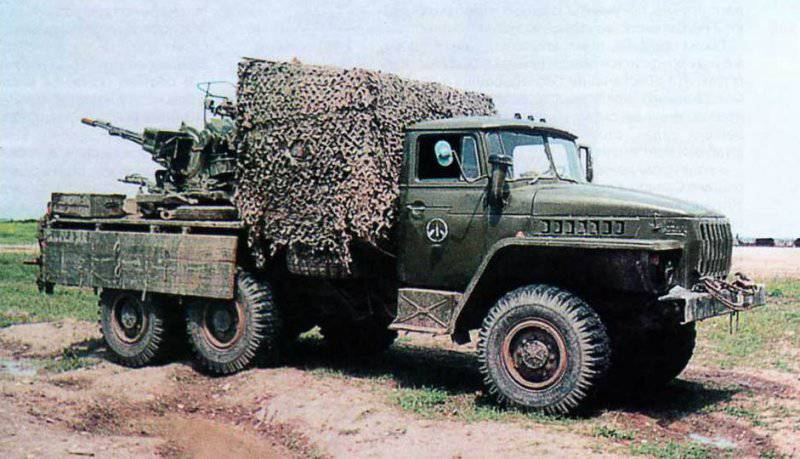
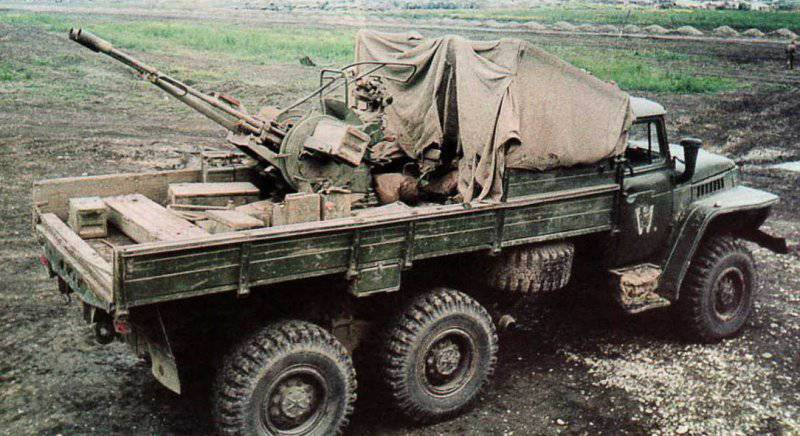
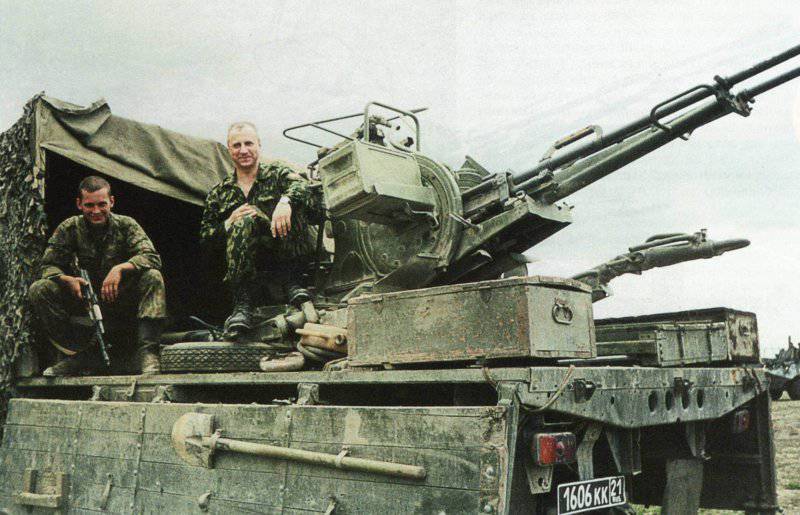
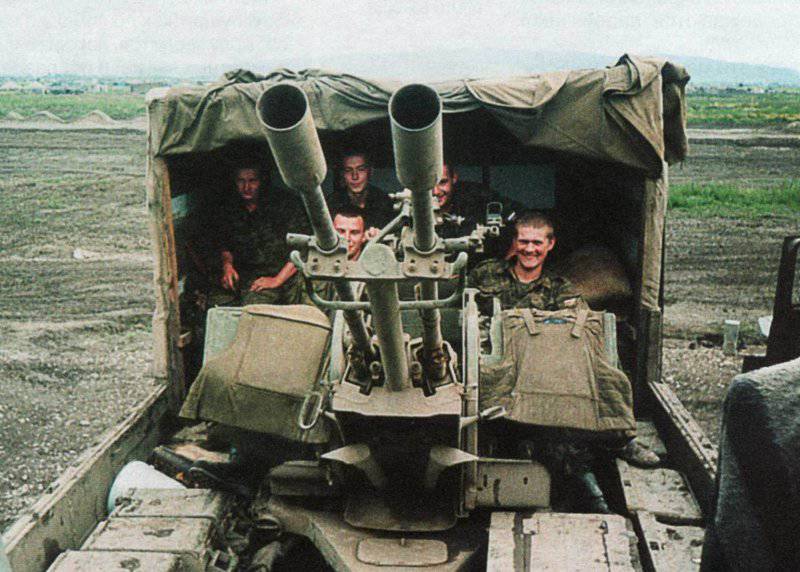
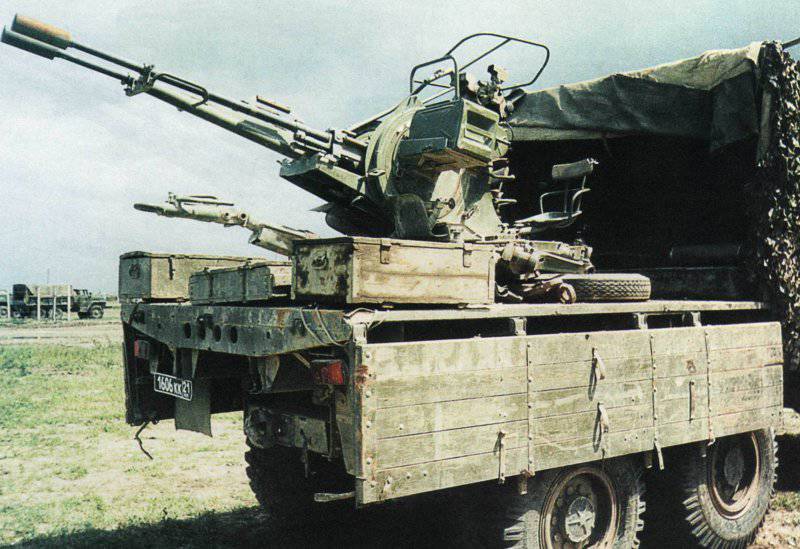
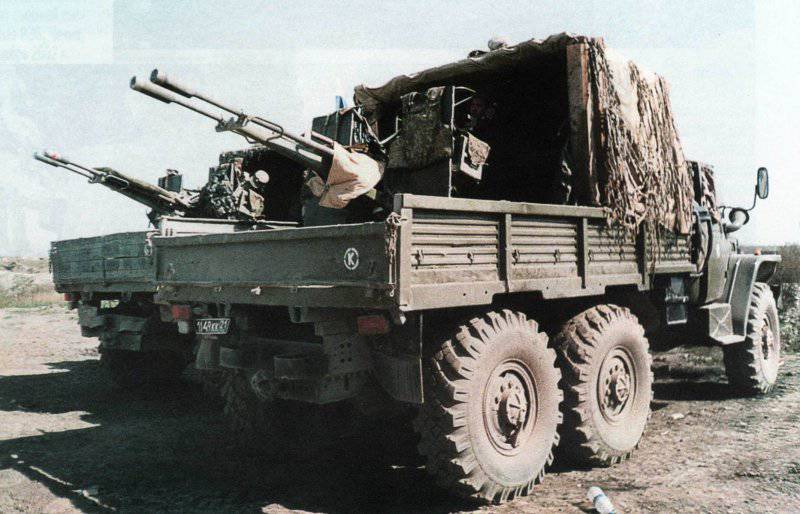
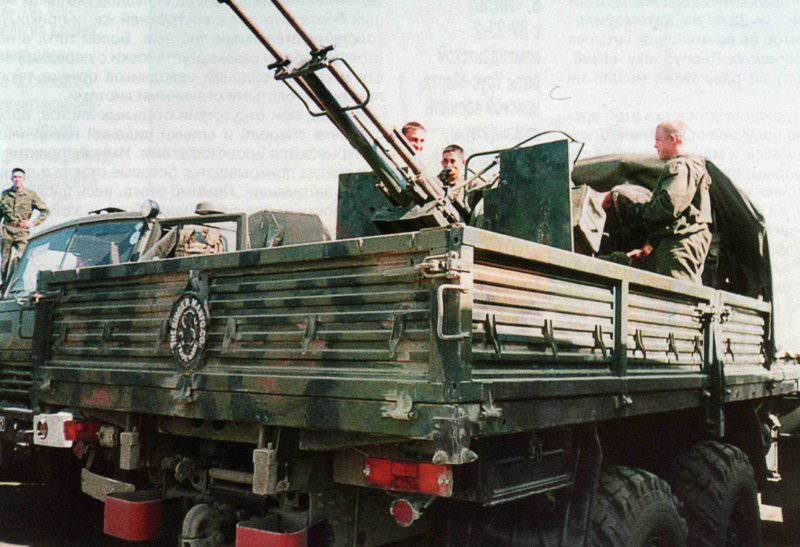
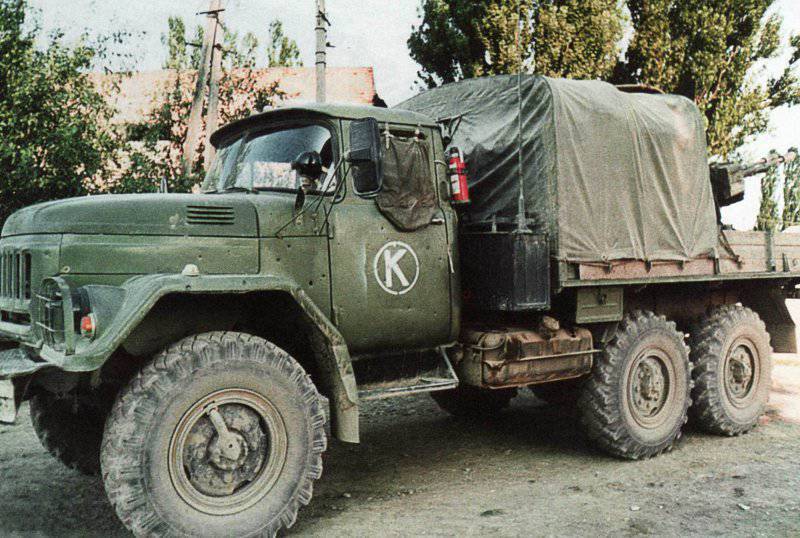
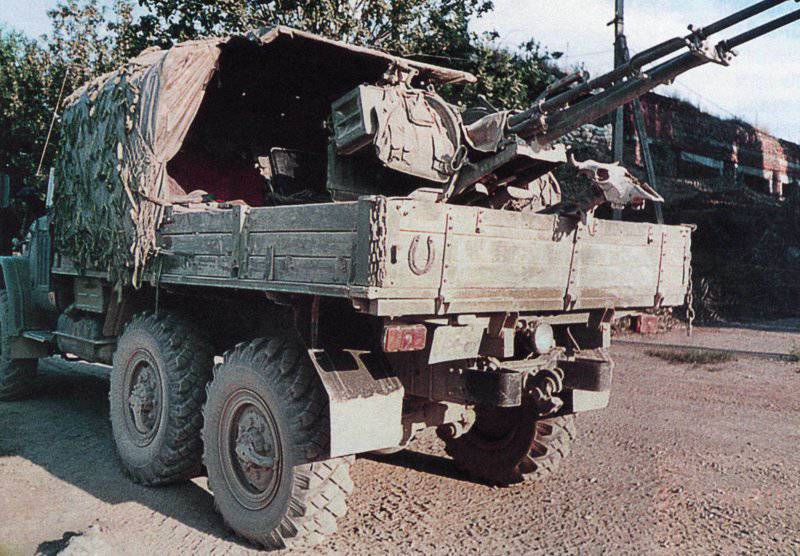
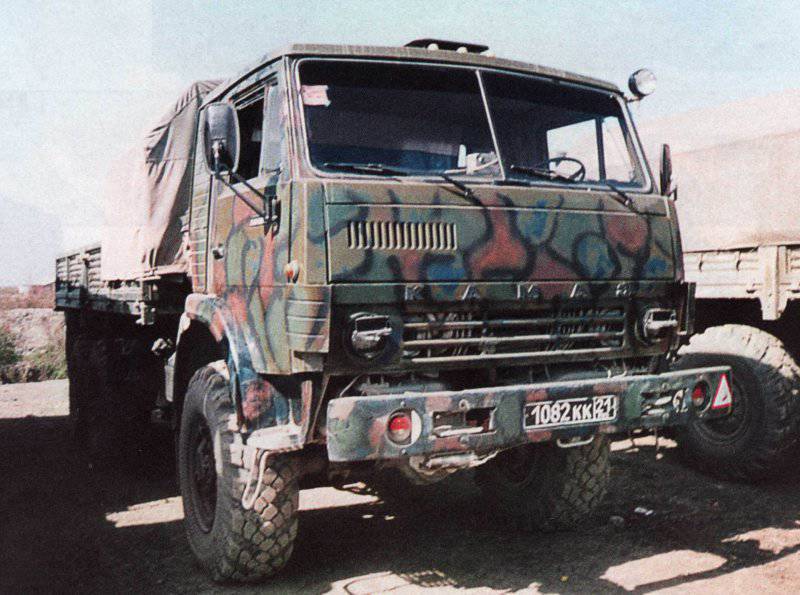
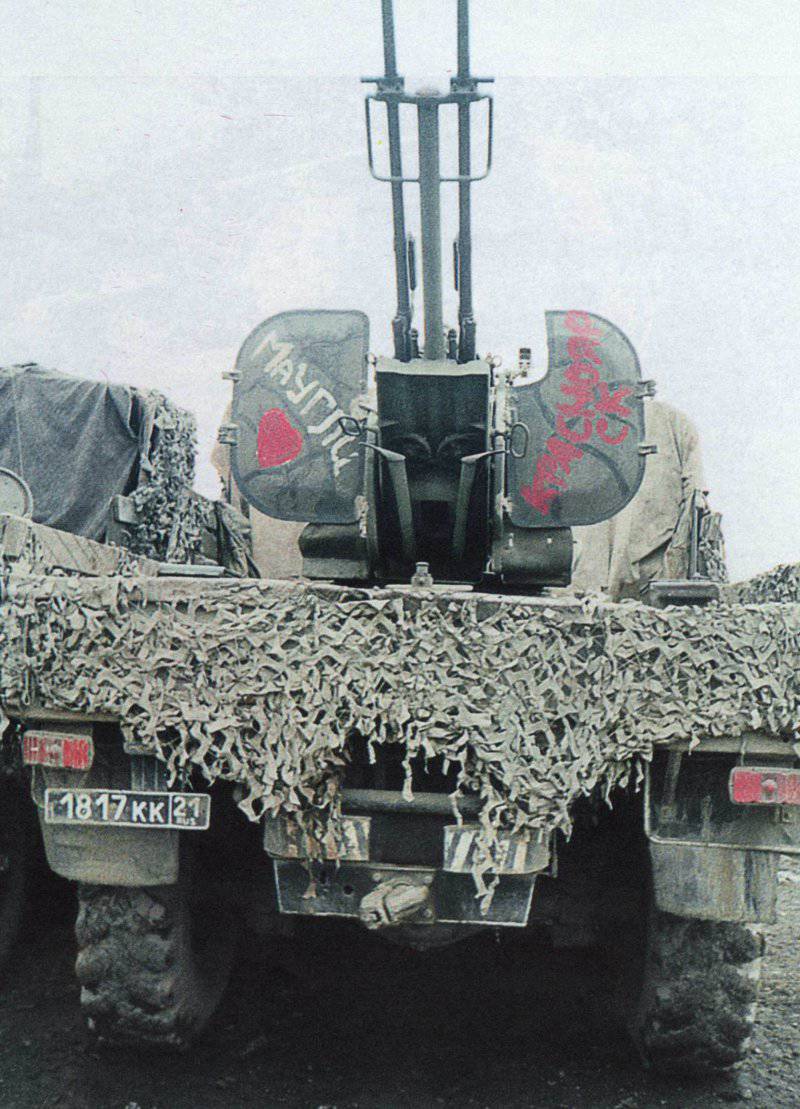
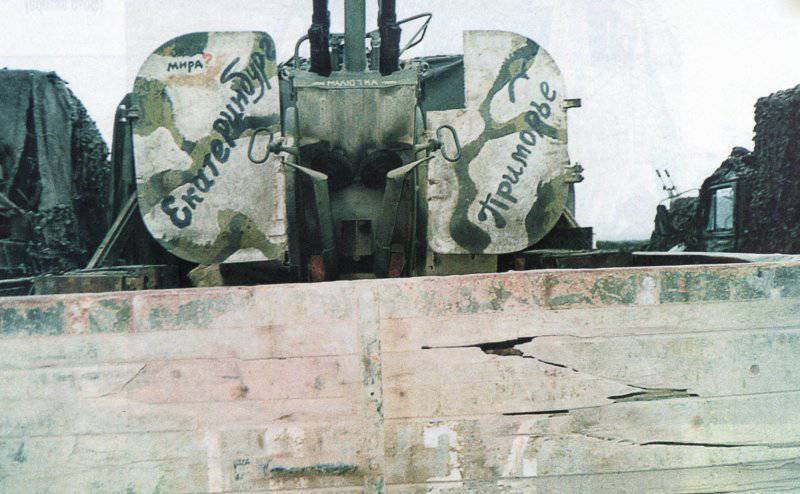
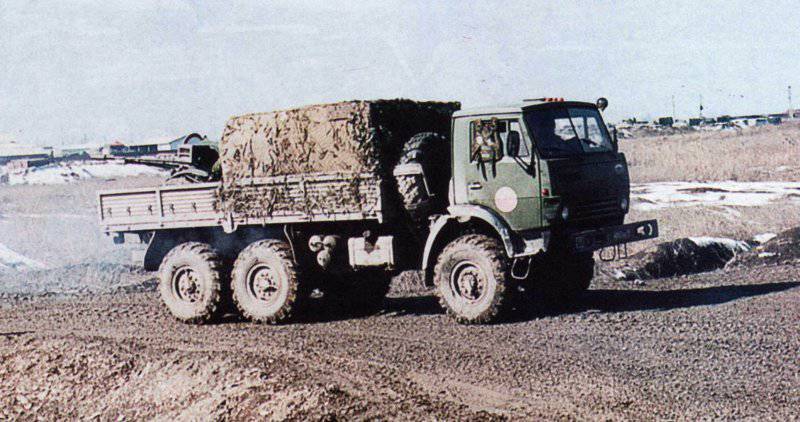
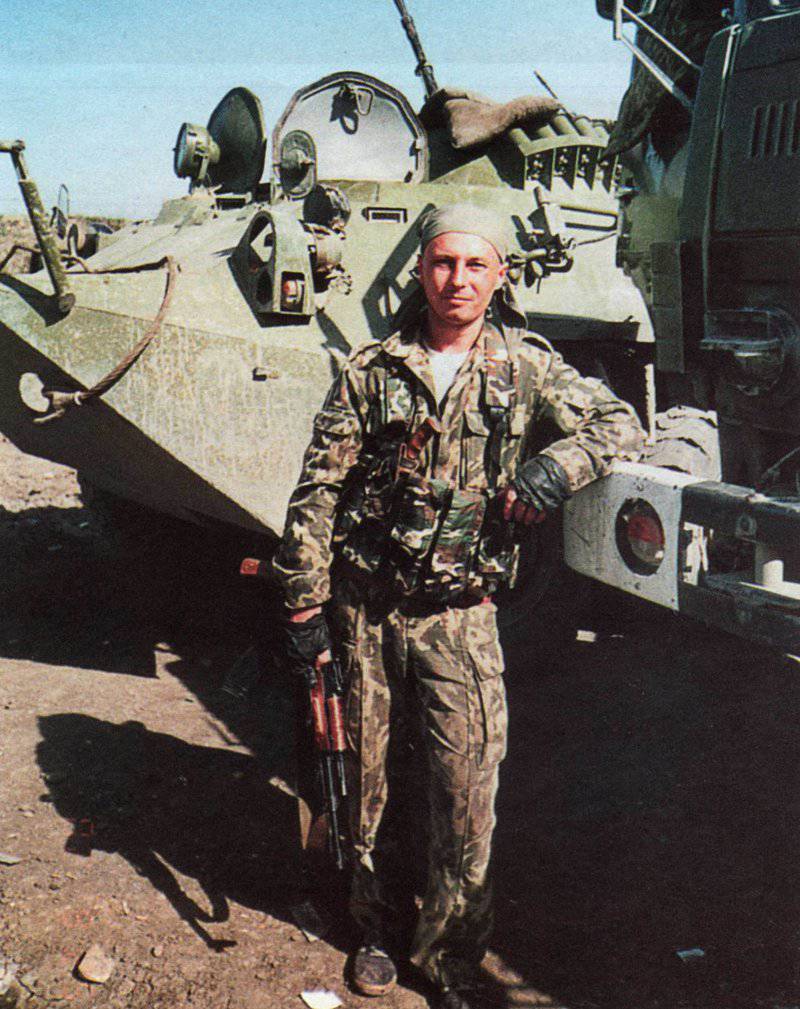
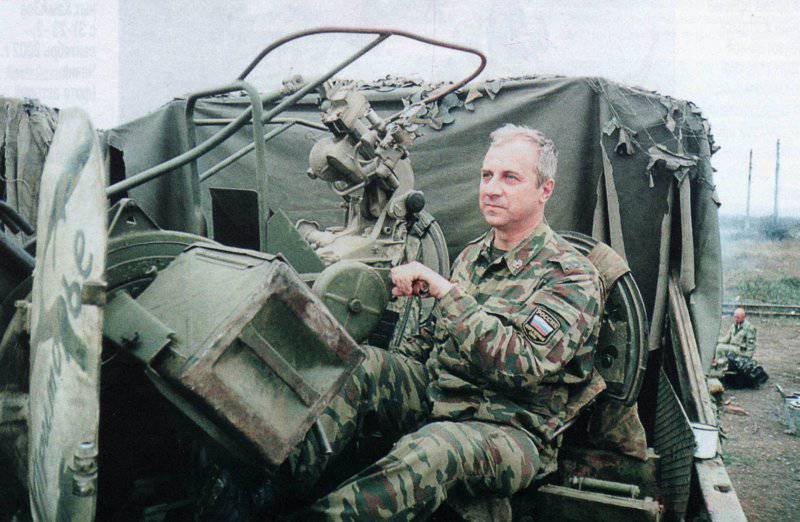
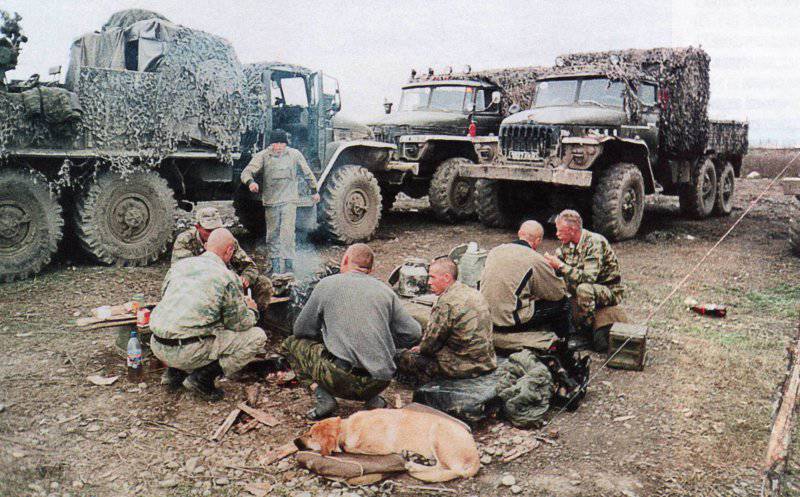
Information